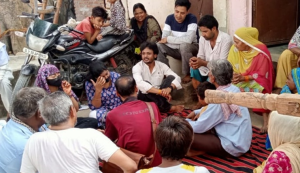Responding to the Second Wave of the COVID pandemic in Indian Cities
We are nearing the end of the second wave in India, and it was barely a month ago that India had peaked the COVID-19 pandemic and was clocking more than 400,000 cases and 4000 deaths a day. Like the first wave, the surge in cases brought to the fore the lack of health care infrastructure and preparedness. However, the second wave was also different in many respects from what transpired in the last year. There was no official pandemic related to centralised ‘lockdown’; therefore, the state responses, particularly to the needs of the marginal and poor, were limited in scale and types, thereby exacerbating the economic losses and marginalisation of the poor. The images of migrants who had gone back to their States of origin from big cities in 2020 again came to public memory, but not at the same scale. Despite measures to control the current pandemic and a more state-level decentralised approach at handling the pandemic, lack of preparedness in the urban areas remains the biggest stumbling block for this and the subsequent COVID pandemic we await.
Indo-Global Social Service Society (IGSSS), along with its partner networks in cities, analysed the situation and identified the following as the significant challenges for working with the urban marginalised population – first, Health infrastructure is increasingly inadequate and needed immediate augmentation; Second, urban livelihoods suffered increasingly as lockdowns halted mobility and incomes in numerous states; Third, the crisis has brought about access to food and basic necessities as a major concern in select population groups that are marginal and undocumented – like urban homeless, migrants, minorities and other excluded groups. Fourth, the misinformation on COVID has seeped deep into communities through social media – WhatsApp leading to stigma and vaccine hesitancy. Fifth, lack of information flow and emerging situation of changing guidelines, regulations, helplines and so on were not available to people. Finally, the absence of strong and decentralised local institutions in the rural like PRIs was missing altogether in the cities. Also conspicuous by the absence was the lack of trained volunteers and task force teams as part of preparedness for disasters.
IGSSS response and intervention framework in the COVID second wave response for the most vulnerable urban poor, COVID-affected population in 13 cities located in 9 states of India. The intervention focused on three broad objectives at three levels and scales. First, to ensure Increased availability of nutritious food and sanitation kits to 20000 targeted urban poor and vulnerable households to ensure food security and safety through the provision of emergency Food Relief, Hygiene Kits at the family / individual level. The lists were prepared with community participation, and doorstep delivery was executed mostly with a trained community volunteer task force. The selection criteria were based on numerous marginality parameters identified and shared beforehand to identify the neediest objectively. Second, supporting 150 urban poor communities to have facilitated access to awareness towards COVID, vaccination, sanitation, micro containment measures at the community level and early detection of infection with support to COVID infected families. This was executed by developing a community task force through community helpdesks led by the community youth guided by city-level teams. This effort required community-level preparedness meetings and plans, with the training of volunteers on disaster preparedness and psycho-social support for effective implementation. Third, at the city level, the intervention included facilitating awareness campaigns and actions for information through helplines. These acted as voluntary coordination centres managed with local CSO networks and collaborated with disaster management agencies for a coordinated response. The main aim at the city level was to keep the information flowing from the communities to city level CSO coordination forums and sharing with authorities for immediate redressal. The helplines also proved critical support to people in distress and sent in coordinated CSO support where required. IGSSS also is playing a critical role as one of the key members in the NGO coordination group established by the National Disaster Management Authority (NDMA) and actively sharing national – state-level developments with over 200 CSOs working in the urban to guide for more coordinated COVID response.
Going forward, IGSSS and its partner networks wish to institutionalise these voluntary arrangements as part of city disaster preparedness and its plans. We hope to engage within the framework of disaster preparedness and aid cities to draft their disaster mitigation plans ground up with community participation, with the inclusion of marginal groups and their needs. Also, to build trained community volunteers with basic knowledge on disaster response, who can in times of need reach out and support communities in times of crisis. Thereby, hoping to develop numerous informal settlements as model settlements showcasing disaster preparedness lead by people themselves.
Contributed by: Aravind Unni, Proshin Ghosh and Savita Verma




